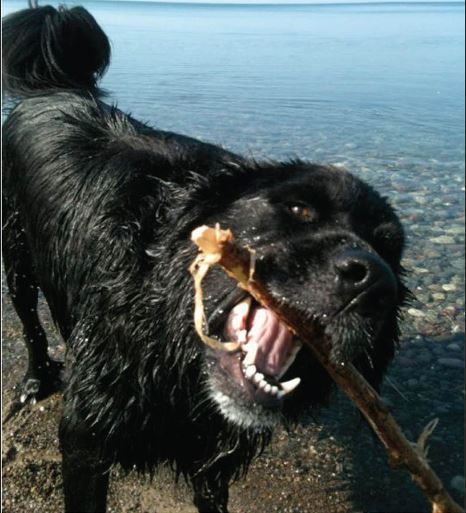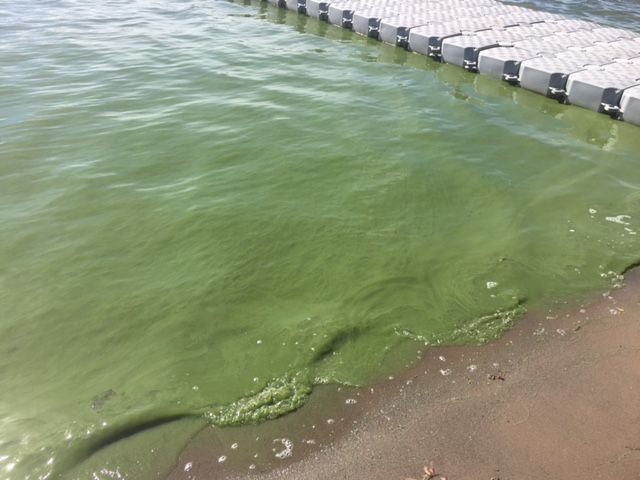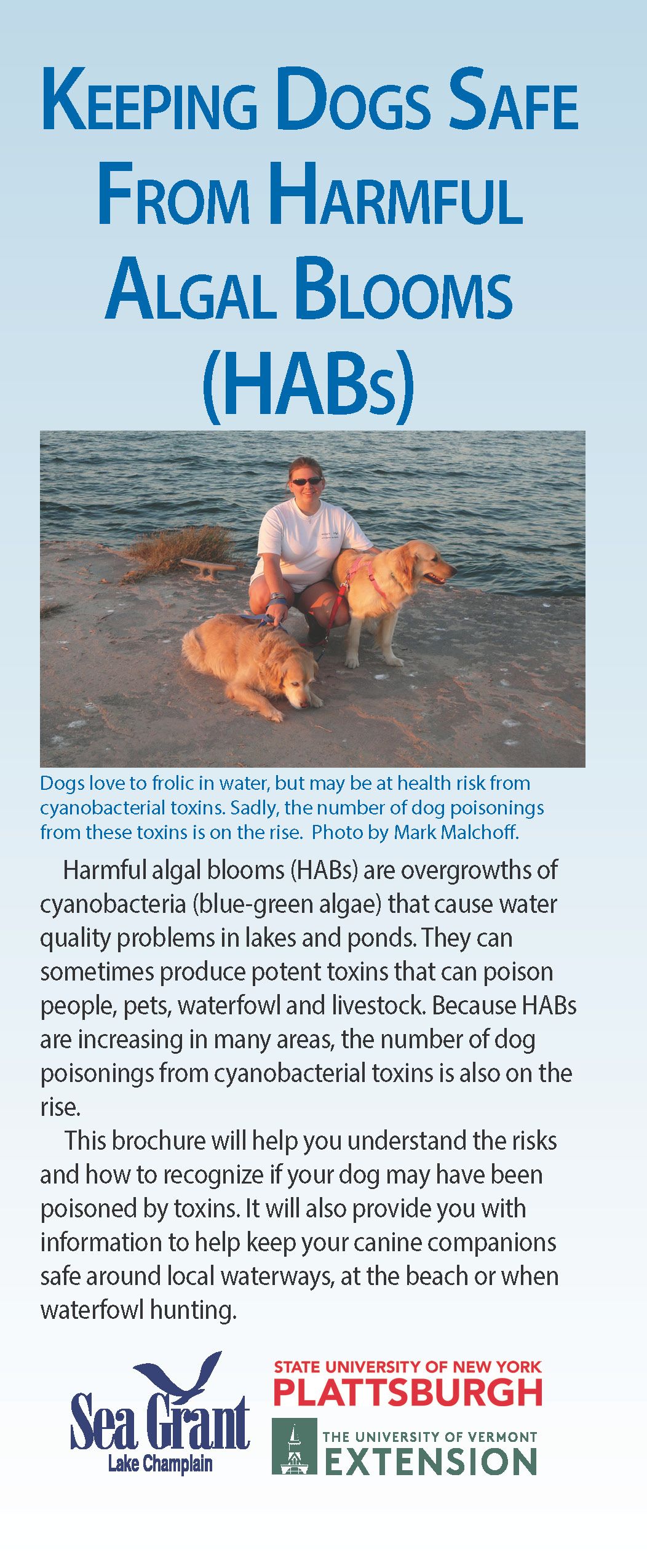New York Sea Grant reminds those of us who have dogs, who love the water, to be alert to the danger that harmful algal blooms pose to our beloved pets.

“Harmful algal blooms, also known as HABs, are dense populations of cyanobacteria, also known as blue-green algae. Not all blooms are harmful, but some algal blooms can produce toxins that affect the liver, nervous system, and skin of humans and their pets,” says Jesse Lepak, Ph.D., Great Lakes Fisheries and Ecosystem Health Specialist with New York Sea Grant.

Dog deaths suspected as a result of harmful algal blooms prompted New York Sea Grant to develop a Dogs and HABs informational brochure in 2014. The brochure, updated in 2017, is downloadable from http://seagrant.sunysb.edu/articles/r/2748 with video clips.
Prevention is Key
Dr. Karyn Bischoff, a toxicologist with the Cornell University College of Veterinary Medicine, Ithaca, NY, advises, “Prevention is the best protection for domestic animals. The most severe effects of HABs are from ingestion. The clinical signs depend on the toxins present in the HAB. Neurotoxins can cause immediate effects, including drooling, tremors, and seizures; hepatotoxins can destroy the liver. Both can be rapidly lethal. Animals that have been exposed should be taken to a veterinarian immediately. Time is of the essence in these cases.”
Toxic HABs can develop in less than 24 hours, which can be faster than testing for toxins can be completed.
Noted algal bloom researcher Dr. Gregory L. Boyer, Ph.D., of the College of Environmental Science and Forestry, Syracuse, NY, comments, “While it is very difficult to prove that animals died from ingestion of blue-green algal toxins, pet owners can take steps to reduce their dogs’ exposure to those toxins. Be diligent about keeping animals out of the scums when algal blooms are present and not letting them eat beach wrack. If the dogs swim in water where blooms are visible, they should be thoroughly washed off immediately to prevent the ingestion of toxins from cleaning their fur.”

Public Education Outreach Underway
In 2018, the New York State Office of Parks, Recreation and Historic Preservation enters its second year of making the brochure available at information kiosks in parks across the state. Lake Champlain Sea Grant has adapted the brochure for use in Vermont. Pennsylvania, Lake Erie HAB Task Force partners intend to use the brochure as part of ongoing outreach in northwest Pennsylvania. A Task Force member, the Regional Science Consortium at the Tom Ridge Environmental Center at Presque Isle, PA, will include the brochure as part of its new Mobile HAB Lab project.
In 2017, the New York State Department of Environmental Conservation listed more than 100 potentially harmful algal blooms in waters across the state. The number of HABs has been increasing such that NY Governor Andrew Cuomo introduced a $65 million initiative to combat HABs.
For a heads-up on which waters in New York State may have a suspected or confirmed HAB, see the New York State Department of Environmental Conservation Harmful Algal Blooms Notification Page at https://www.dec.ny.gov/chemical/83310.html.
In addition to Boyer and Bischoff, those assisting New York Sea Grant with development of the Dogs and HABs brochure included the New York State Department of Environmental Conservation, US Environmental Protection Agency, NOAA National Ocean Service, Stony Brook University School of Marine and Atmospheric Sciences, and Sea Grant Network colleagues.
New York Sea Grant is a cooperative program of Cornell University and the State University of New York, and one of 33 university-based programs under the National Sea Grant College Program of the National Oceanic and Atmospheric Administration. For updates on New York Sea Grant activities statewide, www.nyseagrant.org has RSS, Facebook, Twitter, and YouTube links.
by Kara Lynn Dunn
Kara Lynn Dunn is the publicist for the New York Sea Grant Great Lakes Program. She lives in Mannsville, NY, with her husband and photographer, Brian Whattam, who grew up in Three Mile Bay, NY. Kara earned a journalism degree at the University of Pittsburgh; is a freelance writer, publicist, and designer; and has authored two books on North Country natural and historic sites. Kara vividly recalls childhood camping adventures, along the St. Lawrence River, with the Village of Mannsville Summer Recreation Program. See Kara’s other articles here.
Posted in: Volume 13, Issue 7, July 2018, Nature, News article
Please click here if you are unable to post your comment.
